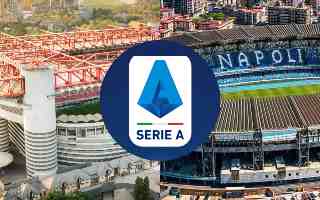Bluenergy Stadium (Stadio Friuli)
| Capacity | 25 132 |
|---|---|
| Country | Italy |
| City | Udine |
| Clubs | Udinese FC |
| Other names | Dacia Arena (2016–2023) |
| Inauguration | 17/01/2016 (Udinese – Juventus, 0–4) |
| Construction | 13/06/2013 – 12/2015 |
| Cost | € 22 million |
| Design | Area Progetto Associati |
| Contractor | Consorzio Cooperative Costruzioni, Presystem, I.CO.P. |
| Address | P.le Argentina, 3 localita Rizzi - Udine |
Advertisement
Bluenergy Stadium – stadium description
Plans of a thorough revamp for Stadio Friuli began surfacing in early 2000s, when Italy was launching its bids to hold Eauropean Championships in football. The stadium was included in both the 2012 and 2013 bids, but both ended up rejected by UEFA.
Just days after the second failed attempt owner of Udinese Giampaolo Pozzo signed an early deal with the city of Udine, envisaging a partnership in which the businessman would cover reconstruction cost himself in exchange for freehold of the stadium land. The deal was eventually confirmed in 2012, seeing the club claim 99-year lease of the building and become Italy’s 3rd private entity to own a large stadium.
At that time Udinese presented the first draft of planned reconfiguration. Stadio Friuli would be downsized to just under 30,000 (later cut by further 5,000) without a running track. Very simple stands would be built on three sides with only the western main grandstand with its iconic arch left standing.
The scheme was at various points expected to cost €40-50 million, but was later optimized to consume a much smaller sum. Initially the stadium was to be surrounded by a landfill-based pedestal, but the idea was eventually scrapped in order to enable commercial spaces on field-level.
Early works began in June 2013 and saw the field moved closer to the main stand, while almost unused athletics track was removed.
While the grandstand was thoroughly renovated by both the city and club, further works got stalled by bureaucracy. Eventually the project went forward only in June 2014, but progress was so fast, that by summer of 2015 two stands were ready (north and east), while the last one was delivered in first days of 2016. This is owed to the building being almost entirely precast.
Its simple skeleton was eventually covered by large and impressive façade of satin-finished steel. Roughly 10,000 “diamond” scales by Italian company Archea cost some €1 million and reflect sunlight or nighttime illumination, giving the stadium an elegant look.
How Bluenergy Stadium compares to other Serie A stadiums?
Advertisement
Pictures
-

16.01.2016 © Elio Meroi 
16.01.2016 © Elio Meroi 
11.05.2015 © Udinese Calcio 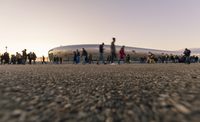
11.05.2015 © Udinese Calcio 
11.05.2015 © Udinese Calcio 
11.05.2015 © Udinese Calcio 
11.05.2015 © Udinese Calcio 
11.05.2015 © Udinese Calcio 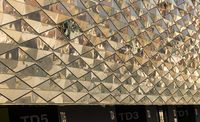
11.05.2015 © Udinese Calcio 
2016 © Archea 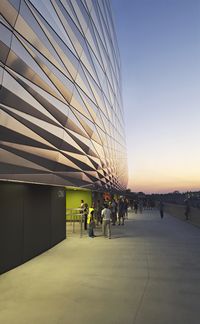
2016 © Archea 
2016 © Udinese Calcio 
2016 © Udinese Calcio 
2016 © Udinese Calcio 
2016 © Udinese Calcio 
2016 © Udinese Calcio 
2016 © Udinese Calcio 
2016 © Udinese Calcio 
2016 © Udinese Calcio 
2016 © Udinese Calcio 
2016 © Udinese Calcio
Related news
2025
2024
-
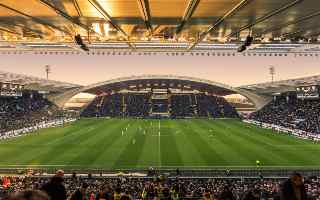
Italy: UEFA Super Cup 2025 to be held in Udine!
On August 13, 2025, Udinese’s stadium will host the UEFA Super Cup for the first time, featuring the Champions League winner against the Europa League winner. The prestigious match will take place at the Bluenergy Stadium in Udine.
-
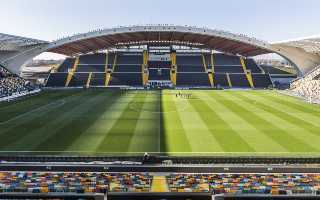
Italy: Udinese Calcio's stadium set for long-awaited modernization
The Udine City Council, in collaboration with Udinese Calcio, has announced plans to revitalize the Bluenergy Stadium. The project, called "Stadio 2.0," aims to transform the stadium into a year-round multifunctional complex.
-
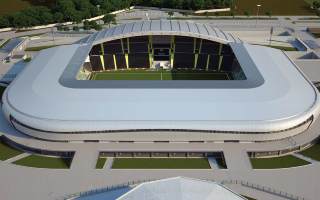
Italy: First stadium on Adriatic with photovoltaic roof in Udine
Stadio Friuli in Udine is set to become a pioneer in sustainability among football stadiums in Italy. It is the first stadium in the country to be equipped with photovoltaic roofing, enabling large-scale solar power generation.
-

Italy: Serie A stadium attendance during 2023/24 season
The Serie A playoffs are now over, so it's time for a stadium recap of the season. And this one surprised with the best attendance in 27 years. 3 teams surpassed the magic barrier of one million spectators, including Inter and AC Milan, who played a fierce Milan derby for the highest attendance, decided by a minimal difference.
-

Italy: How much have Serie A stadiums earned in 2023?
The Italian league is ranked among the prestigious "Big 5" - a group of Europe's best leagues. Despite this, in terms of revenue, Serie A stadiums lag behind venues in England or Spain, as the Calcio e Finanza portal has shown by publishing the revenue brought in by Italian arenas in 2023. The gap between the bottom and the top of the ranking is huge, but the battle for 1st place was fierce.
-

Italy: Serie A stadium saving environment
More than 2,400 state-of-the-art solar panels will be installed on the roof of Udinese's stadium by October, making the venue self-sufficient in energy. The facility is expected to become a benchmark in Europe for other clubs.
-

Italy: Five-year stadium ban for racist shouts towards Maignan
The Italian prosecutor's office has sentenced to a five-year stadium ban a man who insulted AC Milan goalkeeper Mike Maignan during a match against Udinese on January 20. In addition, for the rest of his life he will only watch the matches of his favourite team at best... on TV. More sentences can come.
2022
2020
2017
-

Stadium of the Year 2016: Reason 7, Dacia Arena
You may not recognize this stadium just by its commercial name, but if we say Stadio Friuli, surely the great legend of Italian football will ring a bell. Now it’s a brand new stadium!
-

Stadium of the Year 2016: Join the global vote!
It’s time to make your voice heard and select the best stadium opened in 2016 around the world. Public Vote is now open and will last until March 4.
-

Stadium of the Year 2016: Name your nominees!
For 10 days you’re welcome to share your favourite stadiums opened in 2016. We know of over 30 stadiums eligible for the competition, now let’s see your candidates.
2016
-

10+ Ranking: Europe’s most popular clubs by attendance
We’ve listed all 227 clubs that draw an average of 10,000 people or more every day. Which teams from your country are on the list?
-

Italy: Udinese to cover main grandstand with synthetic grass
Although it was renovated just a couple years back, the main stand of Stadio Friuli (now Dacia Arena) will undergo further changes. Diamong-pattern façade and synthetic-grass roof are to change its appearance.
-

New stadium: Udinese made it, Dacia Arena inaugurated
One of Italy’s most ambitious football clubs got ahead of most Serie A contenders by opening the league’s third private stadium. But owners of the biggest one came and defeated Udinese 4:0.

 StadiumDB
StadiumDB